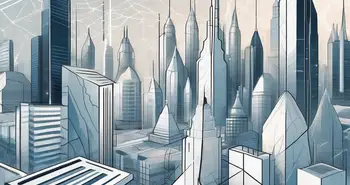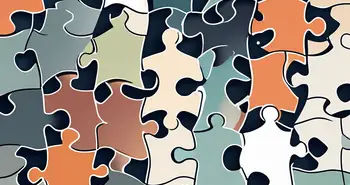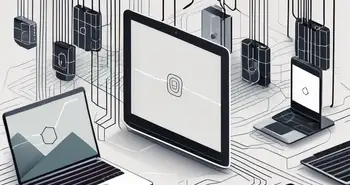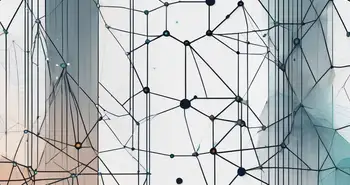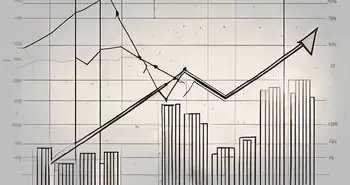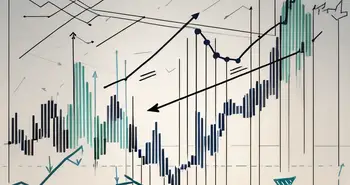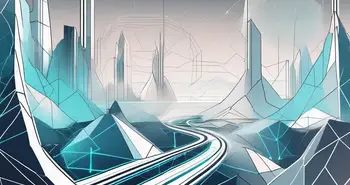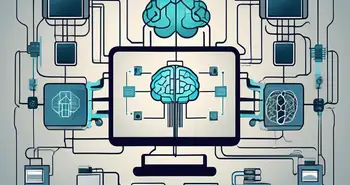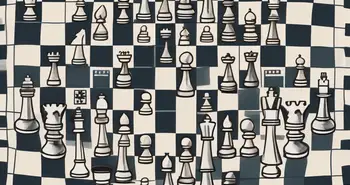Web2 vs Web3: A Comprehensive Comparison
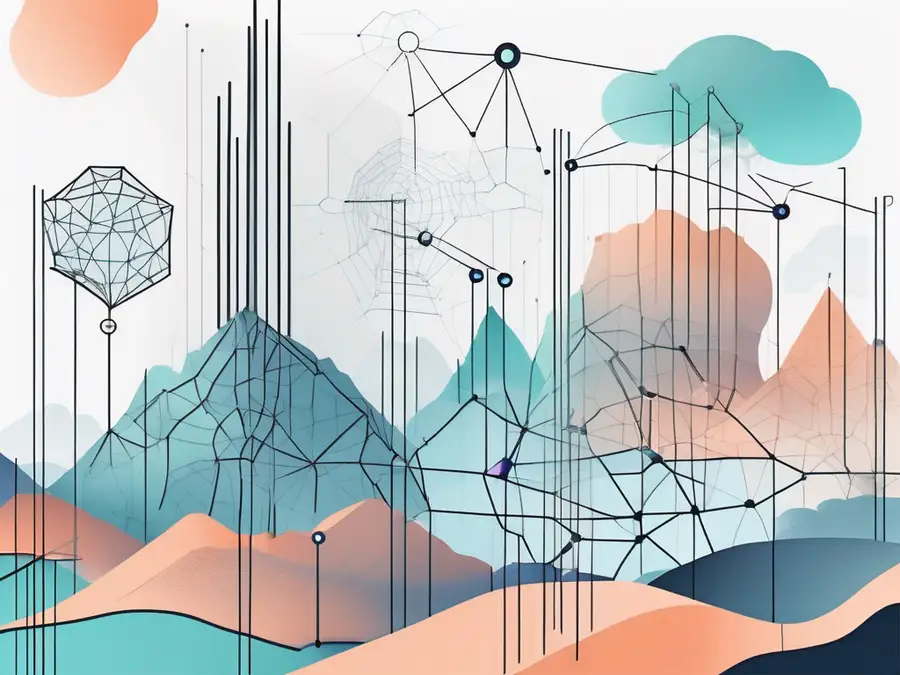
As a technology enthusiast and a firm believer in the power of the internet, I have always been intrigued by the evolution of the web. From the early days of dial-up connections to the seamless experience we have today, the internet has come a long way. In recent years, there has been much talk about Web3 and its potential to revolutionize the way we interact with the digital world. In this article, we will take a deep dive into Web2 and Web3, understand their key differences, and explore the implications of this transition.
Understanding the Basics of Web2
Let's start by defining Web2. In simple terms, Web2 refers to the current state of the internet, where users are primarily consumers of content. It is characterized by centralized platforms and services that we use every day, such as social media networks, streaming platforms, and online marketplaces.
Defining Web2
Web2 is built on the client-server architecture, where users access information and services through web browsers. The content is created and hosted on servers owned by companies, and users interact with this content in a passive manner. In Web2, the power lies in the hands of few centralized entities that control user data and dictate the rules of engagement.
Key Features of Web2
Web2 has brought us numerous advancements and conveniences. Some of its key features include:
- Rich user experiences through interactive websites and mobile apps.
- Personalization and targeted advertising based on user data.
- Seamless social interactions through social media platforms.
- Convenience in accessing and sharing information online.
The Limitations of Web2
Despite its many benefits, Web2 has its limitations. The centralized nature of Web2 platforms raises concerns about data privacy and security. Users have little control over their personal data, and their information can be monetized without their consent. Moreover, platforms can manipulate the content users see, leading to filter bubbles and echo chambers.
However, it is important to note that the evolution of the internet is an ongoing process. As we move towards the future, there are discussions and developments around Web3, which aims to address the limitations of Web2 and create a more decentralized and user-centric internet.
Web3 envisions a future where users have more control over their data and can participate in the decision-making processes of online platforms. It leverages technologies such as blockchain and decentralized networks to create a more transparent and inclusive digital ecosystem.
With Web3, users can expect greater privacy and security, as their data is stored and controlled by themselves rather than centralized entities. They can also enjoy a more diverse and unbiased range of content, as the power to curate and distribute information is distributed among a network of participants.
Furthermore, Web3 promotes the concept of digital ownership, allowing users to truly own their digital assets and have the ability to transfer, sell, or trade them as they see fit. This opens up new possibilities for creators and entrepreneurs, as they can monetize their work directly without relying on intermediaries.
In conclusion, while Web2 has revolutionized the way we consume and interact with online content, it is important to look towards the future and explore the potential of Web3. By embracing decentralization and user empowerment, we can create a more inclusive and equitable internet experience for all.
Unraveling the Concept of Web3
Now, let's delve into Web3 and what sets it apart from its predecessor.
Web3, also known as the decentralized web or the internet of trust, is an emerging paradigm that aims to give back control to the users. It envisions a future where decentralization, transparency, and user empowerment are the norm.
As we explore the intricacies of Web3, it becomes evident that this new paradigm is not just a technological upgrade but a fundamental shift in the way we interact with the digital world. The decentralized architecture of Web3, powered by blockchain and other distributed technologies, is reshaping the internet landscape by eliminating the need for centralized intermediaries. This shift towards peer-to-peer interactions not only enhances security and privacy but also fosters a more inclusive and democratic online environment.
What is Web3?
Web3 introduces several unique characteristics that differentiate it from Web2:
- Decentralized architecture: Web3 leverages blockchain and other decentralized technologies to eliminate the need for intermediaries and enable peer-to-peer interactions.
- Data ownership and control: Web3 empowers users to have full ownership and control over their personal data, allowing them to decide what information to share and with whom.
- Transparency and trust: Web3 ensures transparency through the use of smart contracts, enabling trustless transactions and eliminating the need for middlemen.
Furthermore, the concept of Web3 goes beyond just technological advancements; it embodies a philosophy of self-sovereignty and autonomy. By putting users at the center of the digital experience, Web3 aims to redefine the power dynamics of the internet and create a more equitable online ecosystem.
Potential Challenges with Web3
While Web3 holds immense promise, it also presents its own set of challenges. Scaling decentralized technologies to handle large-scale applications and ensuring interoperability between different systems are some of the key hurdles that need to be overcome for Web3 to reach its full potential.
Moreover, the transition to Web3 requires a paradigm shift not only in technology but also in mindset. Embracing decentralization means reimagining traditional business models, governance structures, and societal norms. It calls for a collaborative effort from various stakeholders to navigate the complexities of this new digital frontier and unlock the full benefits of Web3.
The Transition from Web2 to Web3
Now that we have a good understanding of Web2 and Web3, let's explore how the transition from one to the other is happening.
Technological Changes
The transition to Web3 involves significant technological advancements. Blockchain technology plays a central role in Web3, providing the foundation for decentralized applications (dApps) and enabling secure and transparent transactions.
Impact on User Experience
Web3 is set to revolutionize the user experience in several ways. With decentralized applications, users can expect increased control over their data, enhanced privacy, and the ability to directly participate in and contribute to the platforms they use.
Security and Privacy Implications
Web3's emphasis on decentralization and user control has profound implications for security and privacy. By removing centralized points of failure, Web3 minimizes the risk of data breaches and hacking attempts. Additionally, users have greater control over their personal information, reducing the chances of unauthorized exploitation.
The Role of Blockchain in Web3
Blockchain technology is at the heart of Web3. Let's explore its connection to this new paradigm.
Understanding Blockchain Technology
Blockchain is a distributed ledger that records transactions across multiple computers in a secure and transparent manner. It eliminates the need for intermediaries and enables trust between parties. Blockchain's decentralized nature aligns perfectly with the principles of Web3, creating a foundation for new possibilities.
Blockchain's Influence on Web3 Development
Blockchain technology enables the development of decentralized applications that can operate autonomously and provide transparent and reliable interactions. By leveraging blockchain, Web3 developers can ensure data integrity, tokenization of assets, and efficient consensus mechanisms.
Personal Advice: As an expert in this field, I would highly recommend everyone to familiarize themselves with the concepts of Web3 and blockchain technology. Understanding the potential of Web3 and how it can reshape our digital landscape is crucial in staying ahead of the curve and adapting to the future.
FAQ
What is Web2?
Web2 refers to the current state of the internet, where users are consumers of content on centralized platforms and services.
What is Web3?
Web3 is an emerging paradigm that aims to empower users through decentralization, transparency, and data ownership.
What are the limitations of Web2?
Web2 is characterized by concerns regarding data privacy, security, and centralized control over user data.
What are the unique characteristics of Web3?
Web3 introduces a decentralized architecture, user data ownership and control, and transparency through blockchain and other decentralized technologies.
What is the role of blockchain in Web3?
Blockchain technology provides the foundation for decentralized applications and enables secure and transparent transactions in Web3.
In conclusion, Web2 and Web3 represent two distinct paradigms that shape the way we interact with the digital world. While Web2 has brought us convenience and interconnectedness, Web3 offers the promise of decentralization, user empowerment, and transparency. As we transition from Web2 to Web3, it is crucial to stay informed and embrace the changes that lie ahead. The future of the internet is evolving, and being well-versed in Web3 and blockchain technology will undoubtedly give you an edge in this transformative era.
As you consider the transformative potential of Web3 and its impact on the digital world, seize the opportunity to experience the future of trading with Morpher. Embrace the innovation that Morpher.com offers, from zero fees and infinite liquidity to the flexibility of fractional investing and the power of 10x leverage. Join a platform that's not just adapting to the new era of the internet but is at the forefront of the blockchain revolution in trading. Sign Up and Get Your Free Sign Up Bonus today, and be part of a community that values safety, control, and a unique trading experience. The future is here, and with Morpher, you're invited to be a part of it.

Disclaimer: All investments involve risk, and the past performance of a security, industry, sector, market, financial product, trading strategy, or individual’s trading does not guarantee future results or returns. Investors are fully responsible for any investment decisions they make. Such decisions should be based solely on an evaluation of their financial circumstances, investment objectives, risk tolerance, and liquidity needs. This post does not constitute investment advice.

Painless trading for everyone
Hundreds of markets all in one place - Apple, Bitcoin, Gold, Watches, NFTs, Sneakers and so much more.

Painless trading for everyone
Hundreds of markets all in one place - Apple, Bitcoin, Gold, Watches, NFTs, Sneakers and so much more.

